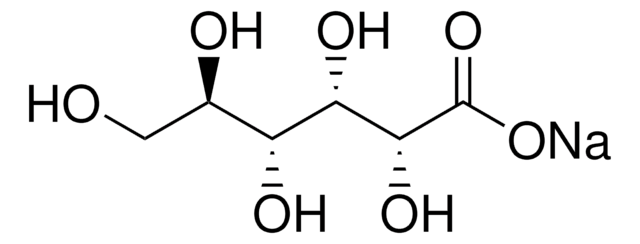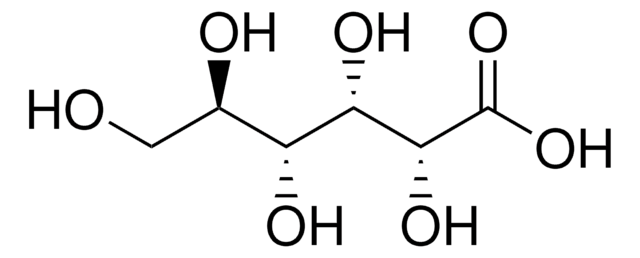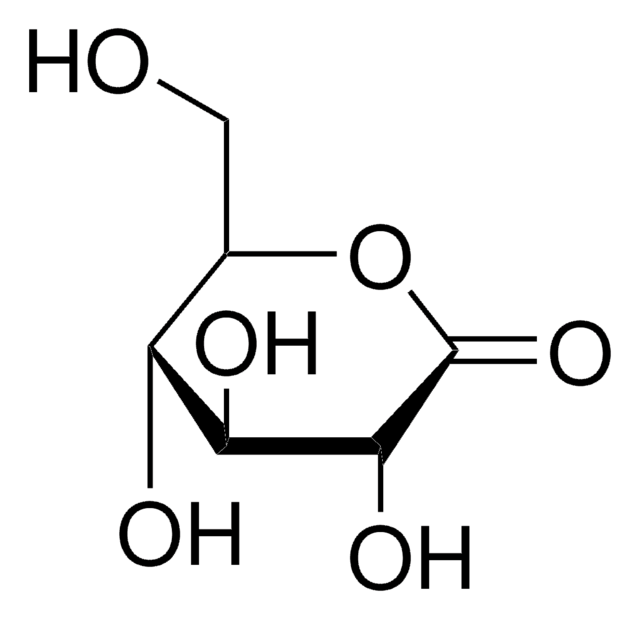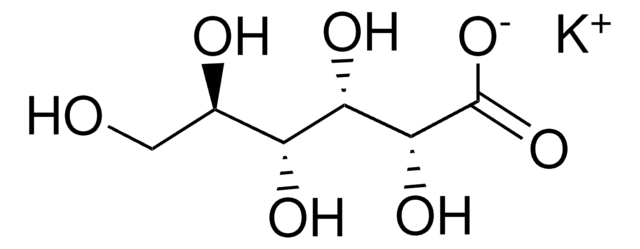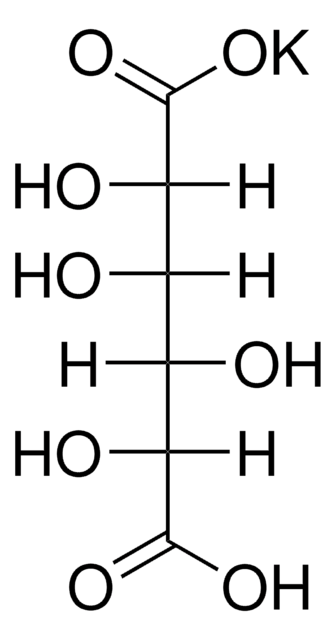Wichtige Dokumente
G9005
D-Gluconsäure Natriumsalz
≥99% (HPLC)
Synonym(e):
2,3,4,5,6-Pentahydroxycapronsäure Natriumsalz, D-Gluconat Natriumsalz, Natrium-D-gluconat
About This Item
Empfohlene Produkte
Biologische Quelle
microbial
Qualitätsniveau
Assay
≥99% (HPLC)
Form
powder or crystals
Methode(n)
HPLC: suitable
Farbe
white to off-white
Nützlicher pH-Bereich
6.5-7.5
mp (Schmelzpunkt)
170-175 °C
Löslichkeit
590 g/L at 25 °C
Anwendung(en)
agriculture
Lagertemp.
room temp
SMILES String
[Na+].OC[C@@H](O)[C@@H](O)[C@H](O)[C@@H](O)C([O-])=O
InChI
1S/C6H12O7.Na/c7-1-2(8)3(9)4(10)5(11)6(12)13;/h2-5,7-11H,1H2,(H,12,13);/q;+1/p-1/t2-,3-,4+,5-;/m1./s1
InChIKey
UPMFZISCCZSDND-JJKGCWMISA-M
Suchen Sie nach ähnlichen Produkten? Aufrufen Leitfaden zum Produktvergleich
Anwendung
- as a component to make synthetic interstitial fluid.
- used as a carbohydrate.
- used as a substitute for sodium chloride to make chlorine (Cl-) free media.
Biochem./physiol. Wirkung
Sonstige Hinweise
Lagerklassenschlüssel
11 - Combustible Solids
WGK
WGK 1
Flammpunkt (°F)
Not applicable
Flammpunkt (°C)
Not applicable
Persönliche Schutzausrüstung
Eyeshields, Gloves, type N95 (US)
Hier finden Sie alle aktuellen Versionen:
Besitzen Sie dieses Produkt bereits?
In der Dokumentenbibliothek finden Sie die Dokumentation zu den Produkten, die Sie kürzlich erworben haben.
Kunden haben sich ebenfalls angesehen
Unser Team von Wissenschaftlern verfügt über Erfahrung in allen Forschungsbereichen einschließlich Life Science, Materialwissenschaften, chemischer Synthese, Chromatographie, Analytik und vielen mehr..
Setzen Sie sich mit dem technischen Dienst in Verbindung.